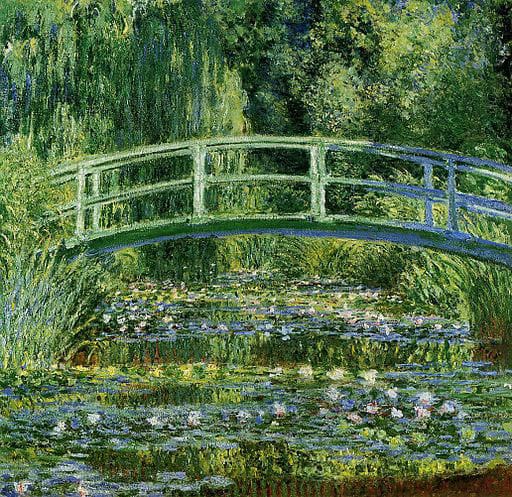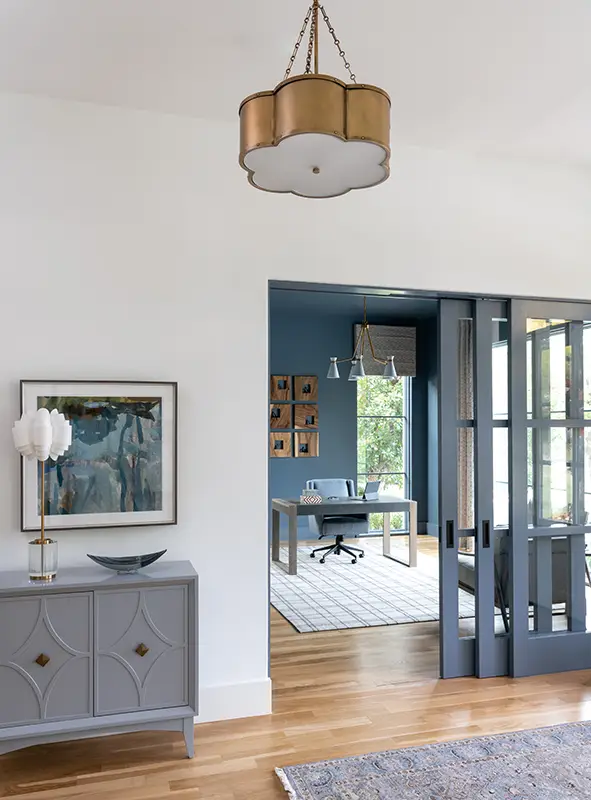If you’re an art lover, chances are good that you also care a lot about the statement your home makes to others. If you’ve collected artwork that holds deep meaning or evokes great positive emotion, consider using one of your favorites to influence your interior decorating. A great designer will help you determine what you love most about a work of art and how to use those elements in your room decor. Check out some examples below and you may just get inspired to do your own artistic makeover!
Using Color: Monet’s Waterlilies and Japanese Bridge

Monet’s wonderful hues can be accentuated with the right design choices.
Using the colors of a great painting can be instructive in design. Going for a room in shades of green would miss all of the depth that Monet created in his work. A yellow-green couch would be stunning as a centerpiece against more neutral walls, and choose the yellows and blues for accessories. Wooden tables could reflect the warm brown tones, and accent items like rugs or pillows could leverage the blue of the wisteria. Looking closely at the balance of all the colors in a painting can lead you to an amazing new interior design.
Using Texture: Seurat’s A Sunday on La Grand Jatte

Seurat’s textural style can be emulated with room accessories.
When looking at your favorite painting, consider emulating its texture in your room. In this case, a soft and bumpy chenille fabric can re-create the texture of all those dots on upholstery or throw pillows. For a more direct approach, punched tin accents, hammered copper table tops or punched paper lampshades could also be used to great effect. Thinking about texture adds depth and dimension to your overall design for a polished, professional look.
Using Line: Van Gogh’s Starry Night

The distinct lines in Starry Night can flow from the canvas into your room’s design.
To emulate this feeling, you can choose fabrics that incorporate large, swirling patterns that re-create the rhythms of Van Gogh’s lines or try choosing a strikingly tall floor lamp, vase or potted plant to acknowledge the cypress tree that punctuates the scene. Additionally, custom wall treatments, window treatments or rugs can use swirl like characteristics to visually guide the eye into the room. To ensure the most sophisticated result, try to avoid direct translations of your artwork such as featuring the exact image onto a throw pillow.
There are so many ways to appreciate your favorite pieces of art. So, if you’re ready to dive into a room makeover based on your own favorite piece, consider hiring a designer to help you uncover your favorite elements of a painting and how to make the most of it in your room’s decor. As with any creative process, the possibilities are unlimited!











Great read, now following!